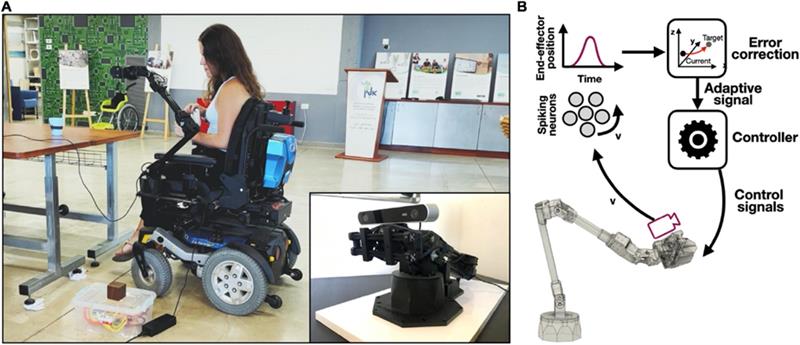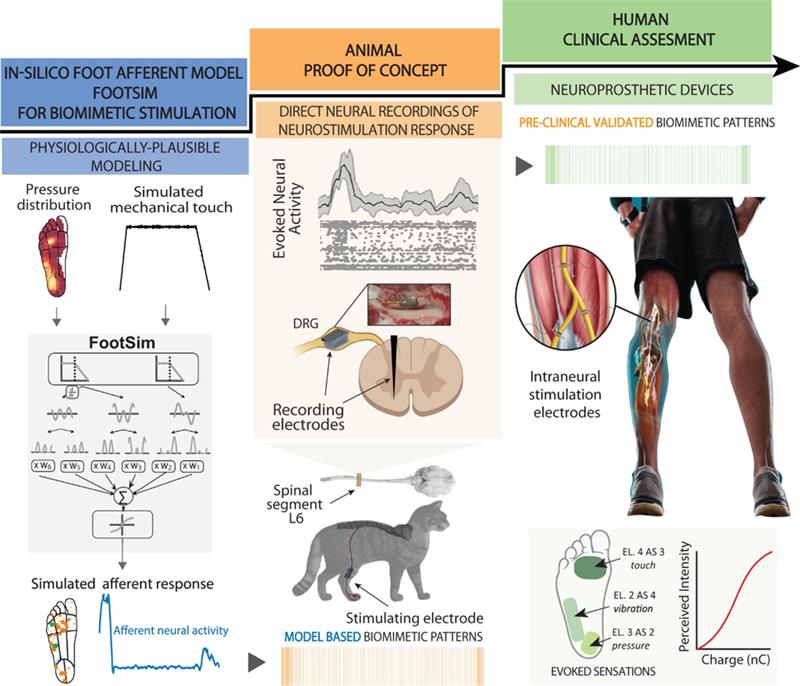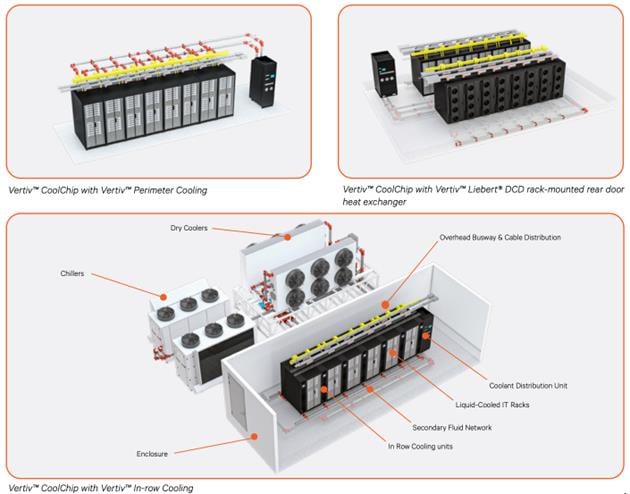Brain-inspired chips are pushing AI beyond the data center, enabling real-time decision-making in devices. But delivering on their promise requires rethinking the infrastructure from the silicon up.
Picture a drone weaving through a warehouse with insect-like reflexes, or a prosthetic limb adjusting to its user in real time. These aren’t far-future concepts. They are early proof points for neuromorphic computing, a new class of artificial intelligence (AI) hardware designed to mimic the human brain.
Neuromorphic chips process data using spiking neural networks (SNNs) that activate only for meaningful input, similar to biological neurons. Unlike central processing units (CPUs) and graphics processing units (GPUs) that separate memory and processing units, neuromorphic computing integrates these components for efficient parallel data processing (see Figure 1).
The result is dramatically lower power consumption, faster response times, and compact designs suited for constrained environments at the edge. This matters more than ever, with global edge infrastructure spend projected to reach $261B in 2025 to $380B in 2028.

Figure 1. The BrainScaleS-2 single neuromorphic chip is one of the systems used for neuromorphic computing applications. Source: Open Neuromorphic.
How neuromorphic computing works
Neuromorphic chips integrate memory and computing in the exact location. This design avoids the von Neumann bottleneck, which occurs when data constantly moves between separate processing and memory units. Instead of continuously churning through data, these chips operate asynchronously and trigger computation only when the sensor input changes. This event-driven model can minimize unnecessary processing and reduce power consumption by up to 100 times compared to conventional systems.
Intel’s Loihi, for example, simulates over one million neurons using just 70 milliwatts. Traditional GPUs performing similar workloads may consume several watts or even kilowatts, which limits their use in remote or mobile environments.
Neuromorphic computing advantages
Neuromorphic computing is not about marginal gains. It represents a structural change in how AI runs at the edge.
Ultra-low energy consumption
By mimicking how neurons fire only when necessary, neuromorphic chips reduce idle power use by up to 100 times.
Low latency
Spiking networks support response times under 100 milliseconds, essential for robotics, real-time diagnostics, and closed-loop control systems.
Parallel processing
Asynchronous execution allows these systems to process multiple sensor inputs simultaneously without creating a bottleneck.
Noise tolerance
Neuromorphic chips are well suited to chaotic environments and can process incomplete or unstructured data more effectively than conventional AI models.
Compact design
Reduced power and thermal needs allow for deployment in embedded devices, removing the need for large cooling systems or offloading to the cloud.
Together, these features suggest neuromorphic systems could support efficient, autonomous AI outside the data center.
Neuromorphic computing use cases
Healthcare
Neuromorphic chips are being explored for low-power ECG analysis and adaptive prosthetics that respond to real-time movement (see Figure 3). Platforms like SpiNNaker and BrainScaleS have demonstrated the viability of brain-like processing in medical contexts. Newer chips such as Intel’s Loihi have shown promise in brain-machine interfaces, decoding neural signals to control robotic limbs, paving the way for mobility restoration (see Figure 2).
Research into molecular simulations and protein folding using SNNs could help reduce energy cost, potentially improving the efficiency and affordability of drug development and medical treatments.

Figure 2. Image A (left): Neuromorphic-controlled wheelchair-mounted robotic arm prototype, demonstrated by research author, Yuval Zaidel. Image B (right): Control architecture: Spiking neural network processing accelerometer data for real-time position adaptation. Source: Frontiers | Adaptive control of a wheelchair mounted robotic arm with neuromorphically integrated velocity readings and online-learning.
Climate modeling and physics
At CERN, event-based sensors inspired by neuromorphic principles have been used to track particles in noisy, high-throughput environments. Sandia National Laboratories is using similar chips to reduce the energy required for climate simulations, a field traditionally dominated by supercomputers.
Robotics and IoT
The Massachusetts Institute of Technology (MIT)’s Grasping Neural Process has demonstrated an SNN-powered robotic arm trained on 1,000 geometries and 5,000 objects, enabling reliable pickups in dynamic environments like warehouses.
Researchers have used Dynamic Vision Sensors (DVS), cameras inspired by the retina, to capture changes in light. These sensors enable drones to navigate crowded spaces with insect-like agility and ultra-low latency
Companies like Prophesee have commercialized event-based vision systems for smart surveillance, reducing bandwidth and energy needs. Their sensors can achieve over 10,000 frames per second while consuming less power.

Figure 3. The development of a somatosensory neuroprosthesis relies on three main pillars: (1) Using computer models to mimic how the nervous system responds to touch (blue segment); (2) Testing on animals to validate neurostimulation strategies (orange segment); DRG—dorsal root ganglion. (3) Conducting clinical trials with humans to evaluate the technology's effectiveness in real-life scenarios (green segment). Source: Nature Communications.
Finance and cybersecurity
IBM has explored the use of SNNs for fraud detection. They trained models that identify patterns in financial transactions with high precision. These systems can adapt to emerging threats with minimal data.
What the infrastructure needs
Supporting neuromorphic systems requires more than incremental upgrades at the edge. It calls for purpose-built infrastructure (see Figure 4) that scales with demand, adapts to changing workloads, and fits within space- or power-constrained environments.
For example, direct-to-chip liquid cooling can manage sporadic heat more effectively than air alone. The Vertiv™ Coolchip approach, which combines liquid and air cooling, helps maintain stable performance while reducing overall energy use. Similarly, power delivery systems must respond quickly to sharp current shifts without overbuilding, which increases both cost and physical footprint. High-speed interconnects are also necessary to support rapid, localized data processing.
On the operations side, neuromorphic workloads demand a different mindset. SNNs and asynchronous architectures are fundamentally different from the models used in most AI training pipelines. Teams must understand how to work with event-driven systems and how to maintain them. Engineers must design around unpredictable loads and dynamic behavior.

Figure 4. For instance, modular solutions, like Vertiv™ Infrastructure Solutions with Vertiv™ CoolChip, which combine direct-to-chip liquid cooling with adaptable air-side strategies, are already designed to handle high-performance workloads at the edge like neuromorphic computing.
Preparing for what’s next
Neuromorphic computing isn’t a concept. It’s already reshaping how edge intelligence works. From robotics and healthcare to climate modeling and cybersecurity, the applications are here. What’s lagging is the infrastructure.
If you plan to deploy AI at the edge, you’ll need systems designed to support these new workloads. That means evaluating rack density, thermal strategies, and power responsiveness. It also means investing in people who understand this new AI paradigm: part neuroscience, part engineering, part systems design.
The evolution of edge AI hinges on how current infrastructure addresses emerging demands.
Visit the Vertiv™ AI Hub to explore infrastructure solutions built for neuromorphic performance—at the edge, in real time, and with efficiency that scales.



